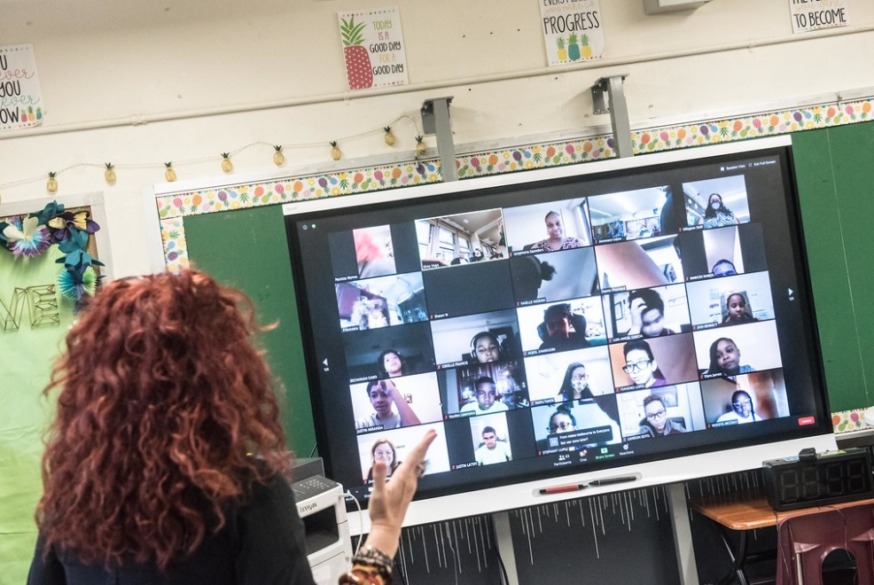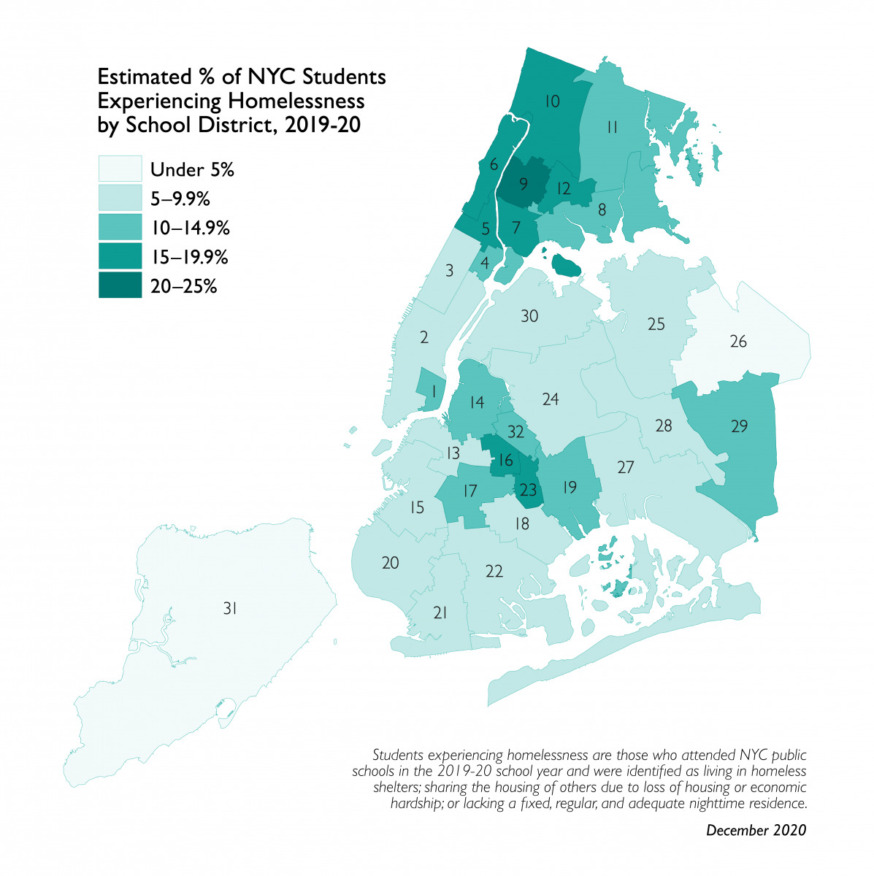
(Michael Appleton/Mayoral Photography Office)
Dec. 6, 2020 By Allie Griffin
More than 21,000 public school and charter school children in Queens had no permanent home last school year, according to a report released Thursday.
The children represented about 20 percent of the roughly 111,000 students citywide who were homeless during the 2019-2020 school year, according to a report released by the Advocates for Children of New York (AFC) that analyzed data from the New York State Education Department.
In Queens, 21,266 students experienced homelessness and they lived in a variety of temporary locations. According to the report, 16,473 were doubled-up in the home of a relative or friend; 3,978 were living in shelters; 755 students were living in cars, parks, campgrounds, temporary trailers or abandoned buildings; and 60 were living in a hotel or motel.
The level of homeless was more pronounced in some school districts than others.
School District 24 — which includes schools in Ridgewood, Maspeth, Glendale, Middle Village, Elmhurst, Corona, and parts of Woodside, Long Island City and Sunnyside — had the highest number of homeless students in Queens, with 5,593 students. In terms of student numbers, it ranked third in New York City, behind School Districts 9 and 10 in the Bronx.
Other Queens districts also had thousands of students who were homeless. School District 30–which covers Jackson Heights, Astoria, East Elmhurst and parts of Sunnyside, Woodside and Long Island City– had 3,084 students deemed homeless.
Meanwhile, School District 25 had 2,105 homeless students; School District 26 accounted for 1,147 homeless students; School District 27 had 2,917 students who were homeless; and School District 28 had 2,838.
School District 29 — which includes schools in Jamaica, Cambria Heights, Hollis, Springfield Gardens, St. Albans, Laurelton, Queens Village and Rosedale — had 2,905 homeless students. However, the district, based on its student population, had the highest percentage of homeless students among Queen Districts. Between 10 and 14.9 percent of students in District 29 were homeless, according to the report.

(Advocates for Children of New York)
The number of New York City students experiencing homelessness has surpassed 100,000 for the fifth consecutive year and about 85 percent of those students are Black or Hispanic, according to AFC.
Students who face homeless are always at a significant disadvantage compared to their peers when it comes to learning. However, in the past year it has been even more pronounced, since remote learning has become a feature of public school and students need computers and internet access.
Many homeless students struggle to get access to a working computer, and they often find it difficult to find a quiet room where they can learn. Many homeless students, according to the report, are often forced to complete assignments on a smartphone in the middle of a noisy and overcrowded room.
“Learning from home is much harder when you don’t have a permanent home,” said Kim Sweet, Executive Director of AFC. “The City must ensure that every student who is homeless has the technology and support they need during this period of remote and hybrid learning.”
Many children who live in shelters have been provided with a DOE-issued iPad. However, often the buildings they are in lack adequate Wi-Fi and cell reception needed to use them, according to the AFC report. Additionally, some children in shelters have yet to receive a device.
The number of city students without a home is likely to rise when the state’s moratorium on evictions expires on Jan. 1, Sweet warns. She notes that the number is far too large as it is.
“The vast scale of student homelessness in New York City demands urgent attention,” she said. “If these children comprised their own city, it would be larger than Albany, and their numbers may skyrocket even further after the state eviction moratorium is lifted.”
AFC is calling on City Hall to provide more support for homeless students to ensure every student has the technology needed to participate in remote learning.





